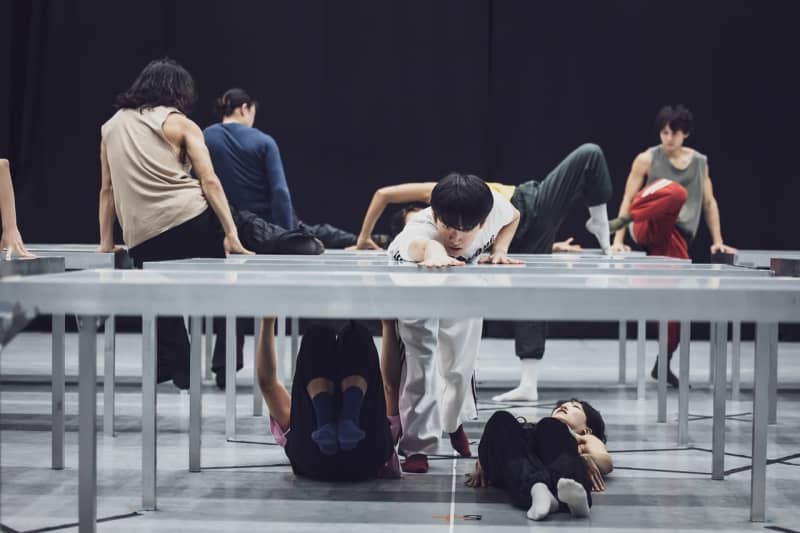**for online headline: Forsythe’s ‘One Flat Thing, Reproduced’ makes Korean premiere in KNCDC double bill

Dancers rehearse
The Korea National Contemporary Dance Company will stage a double bill this week, pairing artistic director Kim Sung-yong’s new work “Crawl” with one of the most celebrated pieces by contemporary choreographer William Forsythe, “One Flat Thing, Reproduced.”
The performance marks the Korean premiere of “One Flat Thing, Reproduced,” which is regarded as one of the choreographer’s signature works. Premiered in February 2000 at Ballet Frankfurt, where Forsythe served as artistic director, the piece has since been performed by companies around the world,…
**for online headline: Forsythe’s ‘One Flat Thing, Reproduced’ makes Korean premiere in KNCDC double bill

Dancers rehearse
The Korea National Contemporary Dance Company will stage a double bill this week, pairing artistic director Kim Sung-yong’s new work “Crawl” with one of the most celebrated pieces by contemporary choreographer William Forsythe, “One Flat Thing, Reproduced.”
The performance marks the Korean premiere of “One Flat Thing, Reproduced,” which is regarded as one of the choreographer’s signature works. Premiered in February 2000 at Ballet Frankfurt, where Forsythe served as artistic director, the piece has since been performed by companies around the world, including the Netherlands Dance Theater, Pacific Northwest Ballet and Staatsballett Berlin.
While Forsythe is best known for his ballet-based works, this piece stands among his most overtly contemporary creations, which is one reason the Korea National Contemporary Dance Company, not a ballet company, sought to bring it to Korean audiences.
The performance begins with a harsh metallic scrape as dancers drag tables onto the stage – 20 steel tables aligned in four precise rows. Between and atop these “glacial tables,” the dancers climb, slide and glide.
As they dart through the maze of metal surfaces, their movements reveal Forsythe’s long-standing fascination with counterpoint, a musical term Forsythe brought into choreography, describing it as “a field of action in which the intermittent and irregular coincidence of attributes between organizational elements produces an ordered interplay.”
In essence, each dancer follows their own rhythm and direction, but together they form an intricate, interdependent order.
At times, the choreography borders on perilous: One dancer lies on the floor as another’s foot sweeps past their head by mere inches. A mistimed sequence could lead to a collision or injury.
“The piece is interdependent,” said Ayman Harper, the stager of the work, in an interview with The Korea Herald after a rehearsal on Tuesday.
“Each dancer has their own track, their own material, their own choreography. The way the piece comes together is off of a cueing system. There are hundreds of links, which means you’re observing the whole time, in real time and making decisions. The dancers have to watch one another closely, looking for a series of cues, and that’s completely fascinating.”
Paired with Forsythe’s work is “Crawl,” a piece that Kim described as one in which he paid close attention to the dancers’ speed.
“A slow movement, to me, is like painting a broad stroke on a canvas. It’s about filling space, patiently and fully. On top of that, I wanted moments of sharp, rapid motion to emerge clearly, so that together they create a sense of depth and dimensions.”
The KNCDC’s double bill will run Saturday and Sunday at the National Theater of Korea in Seoul.

Dancers rehearse